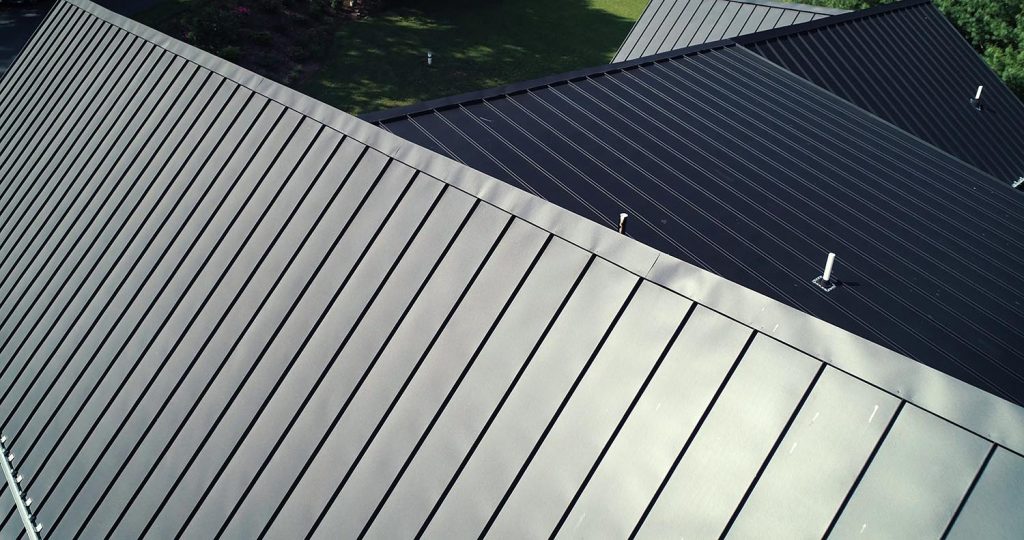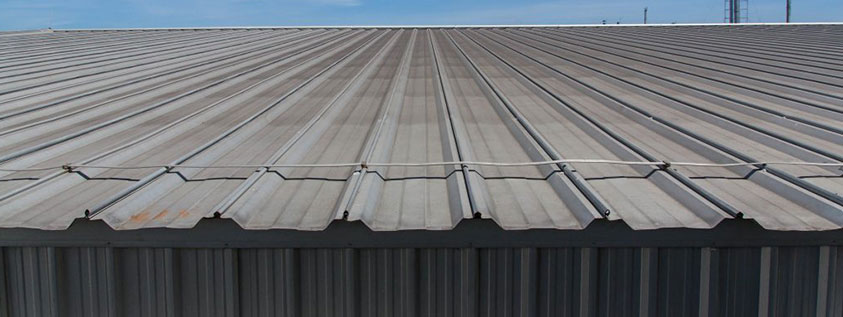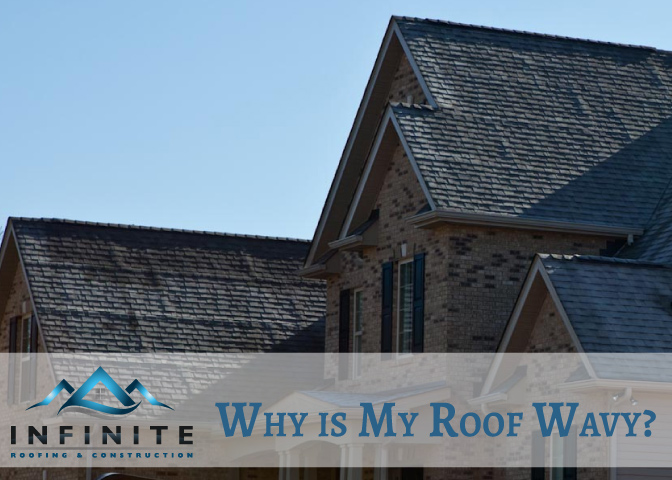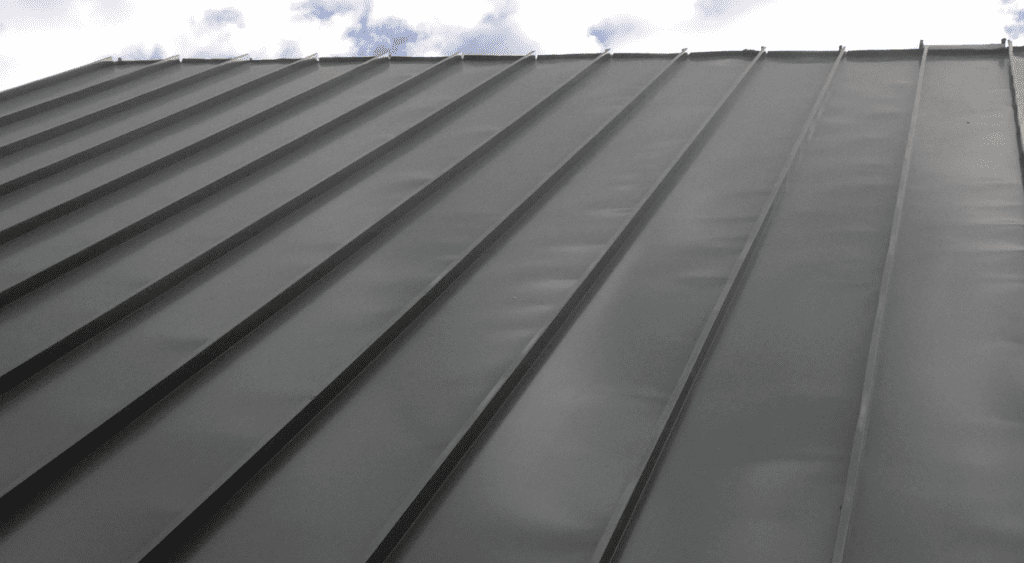Have you ever noticed that your metal roof has a wave-like appearance? It can be quite puzzling to see those ripples and undulations, especially when you were expecting a smooth surface. In this article, we will explore the reasons behind this phenomenon and uncover the truth behind why your metal roof looks wavy. From manufacturing processes to installation techniques, we will uncover the key factors that contribute to this visual effect and provide you with valuable insights to help you better understand your metal roof.

Potential Causes of a Wavy Metal Roof
Improper Installation
One potential cause of a wavy metal roof is improper installation. If the panels are not properly aligned or fastened, they can become warped or wavy over time. It is important to hire a qualified and experienced contractor who understands the proper installation techniques for metal roofing.
Thermal Expansion and Contraction
Metal roofs can expand and contract with changes in temperature, causing the panels to buckle or warp. This is especially true in regions with extreme temperature fluctuations. The constant movement of the metal can lead to the development of waves or ripples on the roof surface.
Inadequate Support Structures
If a metal roof does not have sufficient support structures, such as purlins or battens, it may start to sag or bow over time. This lack of support can cause the panels to appear wavy. It is important to ensure that the roof’s support system is designed to properly distribute the weight of the metal panels.
Imperfect Panels
Another possible cause of a wavy metal roof is the use of imperfect panels. If the panels are not manufactured to the correct specifications or if they have defects in their shape or structure, they may not lay flat on the roof surface. Over time, these imperfect panels can contribute to the development of waves or ripples.
Wind Damage
High winds can cause significant damage to a metal roof, including creating waves or ripples. If the roof was not designed or installed to withstand strong winds, the panels can be lifted or pushed around, resulting in a wavy appearance. It is crucial to choose a metal roofing system that is designed to resist wind forces and to ensure that it is properly installed and maintained.
Oxidation and Weathering
Metal roofs are exposed to the elements, which can cause them to corrode and weather over time. This oxidation and weathering can result in the formation of waves or ripples on the roof surface. Regular maintenance, such as cleaning and applying protective coatings, can help prevent or minimize this issue.
Pooling Water
If water is allowed to pool or accumulate on a metal roof, it can put excessive stress on the panels, causing them to bend or warp. This pooling water can occur due to inadequate drainage systems or clogged gutters. It is important to ensure that the roof has proper slope and drainage to prevent water from accumulating and causing damage.
Poor Quality Materials
Using low-quality or inferior materials for a metal roof can contribute to the development of waves or ripples. Poor quality panels may not have the structural integrity to withstand the elements or may be more prone to warping or bowing. It is essential to choose high-quality materials that are designed to meet the demands of the specific roof application.
Age and Wear
Over time, metal roofs can naturally deteriorate and show signs of wear and tear. The constant exposure to the environment, along with the stresses of thermal expansion and contraction, can lead to the development of waves or ripples on the roof surface. Regular inspections and maintenance can help identify and address these issues before they worsen.
Improper Maintenance
Neglecting regular maintenance tasks, such as cleaning, inspecting, and repairing a metal roof, can lead to the development of waves or ripples. Accumulated debris, such as leaves or branches, can create areas of water pooling or prevent proper drainage. It is important to establish a routine maintenance schedule and address any issues promptly to prevent further damage.

Identifying the Problem
Visual Inspection
One of the first steps in identifying the cause of a wavy metal roof is to conduct a visual inspection. Look for any areas where the roof appears uneven or wavy. Pay attention to the alignment and condition of the panels. Take note of any signs of damage or deterioration.
Professional Assessment
If you are unsure about the cause of the wavy appearance on your metal roof, it may be beneficial to consult with a professional roofing contractor. They can assess the condition of your roof and provide expert guidance on the underlying issues that may be contributing to the waves or ripples.
Using a Straight Edge
Using a straight edge, such as a ruler or level, can help determine if the panels are warped or uneven. Place the straight edge across the surface of the roof and observe for any gaps or variations in height. This can provide insight into the extent of the waviness and potentially indicate the cause.
Observing from Different Angles
Sometimes, the wavy appearance of a metal roof is more noticeable from certain angles. Take the time to observe the roof from different angles and distances to see if the waves or ripples become more apparent. This can help in pinpointing the areas that require attention and potential causes of the problem.
Addressing Wavy Metal Roof Issues
Repairing or Replacing Panels
If the waviness of the metal roof is due to individual panels that are damaged or warped, repairing or replacing those panels may be necessary. A qualified roofing contractor can assess the extent of the damage and determine the appropriate course of action. This may involve removing the affected panels and installing new ones in their place.
Installing Additional Support Structures
If inadequate support structures are the cause of the wavy appearance, installing additional supports can help rectify the problem. This may involve adding purlins or battens to provide better structural stability to the roof. An experienced contractor can evaluate the existing support system and recommend the necessary modifications or additions.
Applying Coatings or Sealants
To address issues related to oxidation and weathering, applying coatings or sealants to the metal roof can be beneficial. These coatings can protect the roof surface from corrosion and prevent further deterioration. It is important to choose a coating or sealant that is compatible with the metal roofing material and to follow the manufacturer’s instructions for application.
Enhancing Ventilation
Proper ventilation is essential for a metal roof to perform optimally and reduce the risk of warping or bowing. Insufficient ventilation can contribute to the buildup of heat and moisture, which can lead to the development of waves or ripples. Upgrading or adding ventilation systems, such as ridge vents or soffit vents, can help improve the airflow and regulate the temperature under the roof.
Improving Drainage Systems
If the roofing system is prone to water pooling, improving the drainage systems can help mitigate the risk of roof waviness. This may involve ensuring that gutters and downspouts are clear of debris and functioning properly. Additionally, modifying the roof slope or adding additional drainage outlets can redirect water away from the roof and prevent pooling.
Regular Maintenance and Inspections
To address and prevent wavy metal roof issues, regular maintenance and inspections are essential. This includes cleaning the roof surface, removing any debris or obstructions, and checking for signs of damage or deterioration. Implementing a maintenance schedule and addressing any issues promptly can help prolong the lifespan of the roof and maintain its appearance.

Preventing Wavy Metal Roofing
Choosing a Reliable Contractor
One of the best ways to prevent wavy metal roofing is to choose a reliable and experienced contractor for the installation. A qualified contractor will have the expertise and knowledge to properly install the metal roof and avoid any potential issues that could lead to waviness.
Ensuring Proper Installation
Proper installation techniques are crucial in ensuring a flat and stable metal roof. This includes correct alignment, fastening, and support structures. Working with a reputable contractor who follows industry best practices for metal roof installation is essential for preventing waviness.
Using High-Quality Materials
Investing in high-quality materials for a metal roof is an important consideration for preventing waviness. Inferior materials may lack the structural integrity to withstand the elements or may deteriorate more quickly, leading to the development of waves or ripples. Choose reputable manufacturers and suppliers for the best quality materials.
Considering Climate and Environmental Factors
When selecting a metal roof, it is important to consider the climate and environmental factors of your location. Metal roofs can expand and contract with temperature fluctuations, so choosing a roofing system that is designed to withstand the specific climate conditions can help minimize waviness issues.
Regular Cleaning and Maintenance
Regular cleaning and maintenance are crucial for preventing the development of waves or ripples on a metal roof. Removing debris, such as leaves or branches, ensures proper drainage and prevents issues associated with pooling water. Implementing a maintenance routine can help identify and address any potential problems before they worsen.
Reinforcing Support Structures
If you live in an area prone to heavy snowfall or strong winds, reinforcing the support structures of the metal roof can help prevent waviness. Adding additional purlins or battens can provide additional structural stability and minimize the risk of the roof sagging or bowing under the weight or forces of extreme weather conditions.
Addressing Issues Promptly
If any issues arise with your metal roof, it is important to address them promptly to prevent them from worsening and potentially causing waviness. Regular inspections and prompt repairs can help identify and fix any problems before they lead to significant damage or affect the overall appearance of the roof.
Conclusion
A wavy metal roof can be a cause for concern, but with proper understanding and proactive measures, it can be addressed and prevented. By considering the potential causes, identifying the problem, and implementing the necessary solutions, you can ensure the longevity and aesthetic appeal of your metal roof. Remember to choose a reliable contractor, prioritize proper installation, use high-quality materials, perform regular inspections and maintenance, and address any issues promptly. With these steps, you can enjoy the benefits of a sturdy and visually appealing metal roof for years to come.
